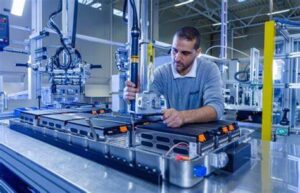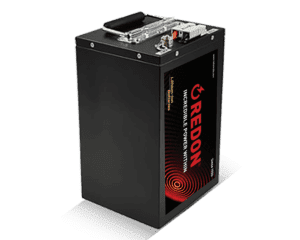Introduction
Battery assembly requires spot welding, which is an essential process of it. Accuracy and reliability in battery component joining are a must for the realization of performance, safety, and durability. This article investigates the science of spot welding in battery assembly by examining the principles, materials, equipment, and methods used.
Spot welding basics are critical in the routine of battery manufacturing, especially when it comes to Redon lithium battery, which is aimed at improving efficiency for diverse applications in markets such as automotive and consumer electronics. In the battery welding process, aluminum has a lower melting point (660.3°C) than copper (1084.62°C), which makes it easier to melt the aluminum layer. This examination of aspects of spot welding helps us understand its contribution to the future of battery technology.
Spot Welding Fundamentals

An instance of resistance welding is spot welding, which is a process that creates a bond between two or more metal surfaces by using a focused point of heat and pressure. The 18650 cell type and the 8 mm × 0.15 mm nickel-plated steel tape are used for making battery packs of the same height and width for a number of good reasons, as they are common and compatible when it comes to Redon lithium batteries.
With the heat, the metal gets softer, and thus, pressure is exerted, forcing the materials to merge into each other. The welds are usually strong and resistant due to the welding process, and therefore, spot welding is suitable for joining battery elements such as tabs, busbars, and terminals. The basic principles of spot welding are required to ensure uniform and dependable weld quality in battery assembling.
Applications of Spot Welding in Battery Manufacturing
With its high precision and reliability, spot welding has become a staple for critical component bonding during battery manufacturing. To gain the optimal battery assembly methods, their applications should be fully understood.
Tab Welding
Battery tabs are usually spot-welded to electrodes to provide effective electrical connections within battery cells. This application provides a reliable current and reduces internal resistance, thus improving the whole system’s performance and efficiency. Accurate control of welding parameters is necessary to ensure uniform weld quality and avoid damage to sensitive battery elements.
Busbar Assembly
Bus bars, which distribute electrical current within battery packs, are assembled using the spot welding process. This step promotes the unification of many cells into one battery pack, thereby improving energy storage and power output. Electrode design and placement optimization are very important in order to get welds that are uniform and also to minimize heat-induced distortions of busbar assemblies.
Terminal Welding
Spot welding is used in the joining of terminals to battery cells to ensure reliable connections to external circuitry and electrical devices. This application guarantees stable contact sites and eliminates the occurrence of possible short circuits, improving the safety and reliability of battery-powered systems. Correct alignment of the electrode and pressure regulation is essential for strong, uniform welds and to avoid electrode indentation on battery terminals.
Conclusion
To sum up, spot welding is the lynchpin of battery assembly, providing a somewhat refined approach for linking essential units with accuracy and dependability. We learn how to optimize battery manufacturing processes, improve efficiency and nonperformance, and ensure the safety of battery systems in various industries by getting into the principles and applications of battery technologies. The science behind spot welding will be an important player in the future of battery technology and energy storage solutions while technology is continually progressing. Contact us for more details on spot welding in lithium battery assembly!




